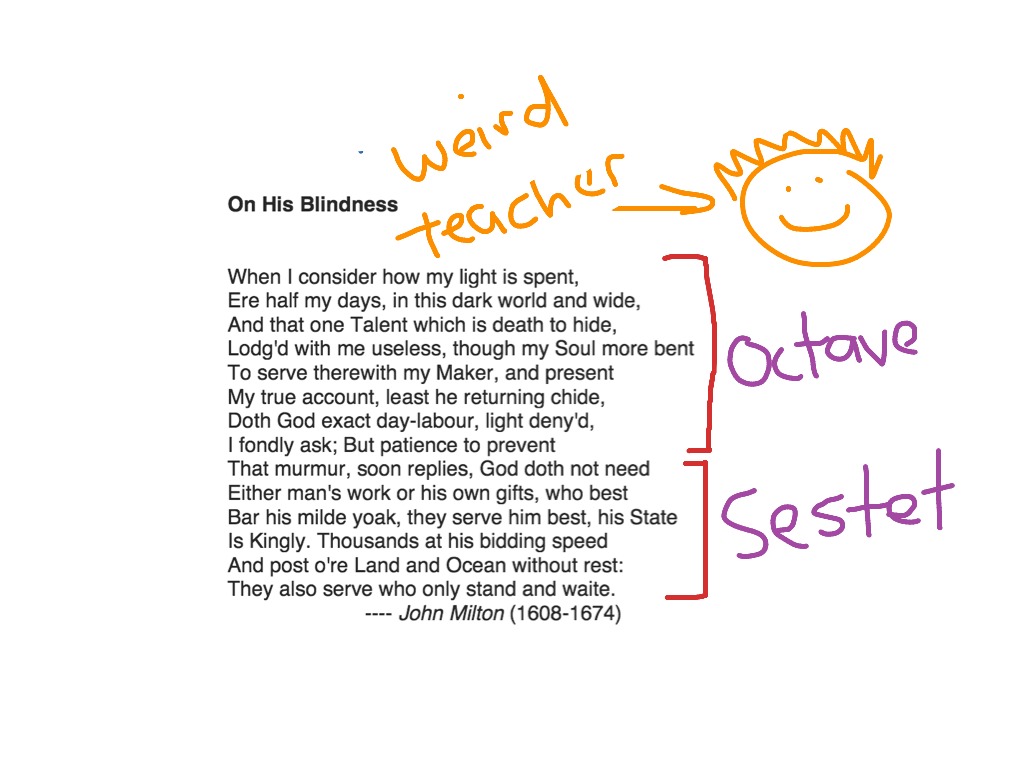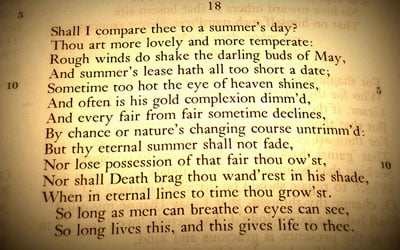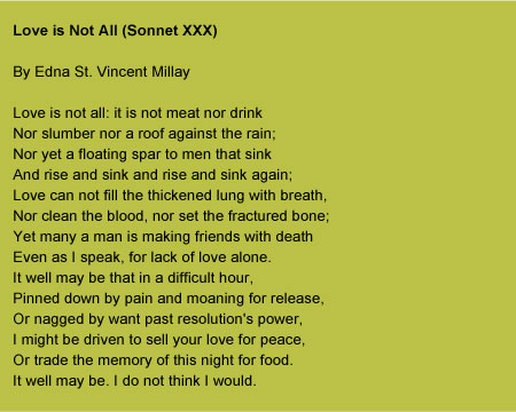

Let’s try “It’s too bad this duck egg will never hatch” as the issue up for debate. So let’s come up with an argument or problem about the duck egg to address in the two sonnets (remember, we’ll be writing a Shakespearean version and a Petrarchan version). How about this photo of a duck egg from my Instagram?Īs you can see, the current caption is pretty uninspired.
Sonnet examples by students how to#
How to begin a sonnet: select a subject and pick your problem.Īs I did in the “ How to write haiku” post, I’ll use a random photo I posted to one of my social media accounts as the subject of the poem. We’ll do it for both Shakespearean and Petrarchan sonnets. Since sonnets are basically little rhyming essays that have a beginning, middle and end, let’s learn how to write them that way, from start to finish. This turning point usually produces a change in the tone or mood of the poem. It’s the “However …” or “On the other hand …” moment in which the poet offers a counterargument to the question or a resolution to the problem. Then, at a set point in the sonnet, they introduce the “ volta.” Somewhat akin to the “ cutting word” found in haiku, the volta is the turning point in the argument of the poem (the word means “ turn” in Italian). Though the subject of a sonnet can be anything - from the pangs of unrequited love to the glories of good hamburgers - the overarching theme of a sonnet points to a specific question or problem the poet sets out to solve in rhyme.įirst, the poet states the situation to be considered or question to be answered. Last but not least, sonnets are traditionally structured like a two-part mini-argument.

The Petrarchan rhyming pattern is quite different from the Shakespearean pattern: Petrarchan sonnets cram all 14 lines into just two stanzas: an opening stanza that’s got eight lines (called an “octave”) and a closing stanza that’s got six lines (called a “sestet”). The lines in the four stanzas rhyme in the following way: A Shakespearean sonnet starts with three stanzas that have four lines (called “quatrains”) and ends with a stanza that’s got just two lines (called a “rhyming couplet”). Shakespearean sonnets have four stanzas (groups of lines). The way the 14 lines are arranged into stanzas Also called “English” and “Italian” sonnets, there are two main differences between them:ġ. The two styles became known as Shakespearean and Petrarchan sonnets. Shakespeare eventually wrote more than 150 of these newfangled poems, but in a slightly altered style. Then, in the 16th century, the sonnet was brought to England, where it was embraced by dramatist William Shakespeare. Petrarch, began writing sonnets of his own. Not long after they were invented by poet Giacomo da Lentini, fellow Italian Francesco Petrarca, a.k.a. The 14 lines are divided into groups called stanzas, which means “rooms” or “stations” in Italian.Īnd with stanzas, we come to the two main types of sonnets … Shakespearean vs.

Sonnets are brief: just 14 lines long (that’s a grand total of 140 syllables, for those keeping count). “But, SOFT! What LIGHTthrough YONder WINdow BREAKS? In other words, each line of a poem written in iambic pentameter is 10 syllables long and sounds like this famous line from Romeo and Juliet when read out loud: And what’s an iamb, you ask? An iamb is a group of two syllables that has the following pattern: Each line of a poem written with this kind of rhythm (that’s the “meter” part) has five (that’s the “penta” part) iambs. That rhythm is known as iambic pentameter. The word “sonnet” comes from the Italian word “ sonetto,” or “little song.” Invented in Italy way back in the 13th century, sonnets are short poems written with a specific, regular rhythm. You just have to learn a few simple facts about what makes a poem a sonnet.

Lucky for us, sonnets aren’t just a joy to read, they’re also easy to write. Now you want to write a sonnet (or have to - hello, English 101 students!) Auden, Edgar Allen Poe, and countless other poets. So did Francesco Petrarch, Edmund Spenser, William Butler Yeats, W.


 0 kommentar(er)
0 kommentar(er)
